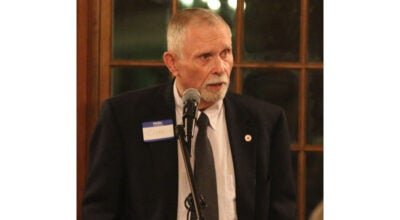460’s road ahead grows more uncertain
Published 11:09 am Saturday, March 15, 2014
by Matthew Ward / Suffolk News-Herald
U.S. Army Corps of Engineers officials and many others are waiting to see what happens now after the state transportation secretary announced the suspension of contract work on the new Route 460 project, increasing the likelihood of improving the existing road instead.
At a press conference in Virginia Beach on Friday, Aubrey Layne said that contract and permit work was being suspended for an estimated 12 months, saving taxpayers $420 million on the $1.4-billion project.
“On the advice and instructions from the governor and myself, we have issued a stop-work order to US Mobility Partners, to temporarily stop work on the project,” Layne said.
The order was permissible under Mobility Partners’ contract to design and build the 55-mile, limited-access toll road from Suffolk to Petersburg, he said.
“The contractor may assert some other defenses, but it is our hope that we will continue to work with them and be able to continue to negotiate with them,” Layne said.
After spending $300 million to date, the suspension would remain “until, quite frankly, we end up knowing exactly where we are going to be going,” Layne said.
Under federal law, the project requires a corps permit to cut any path through environmentally sensitive wetlands.
Late last year, it was discovered that VDOT’s preferred corridor would impact about 3-1/2 times the amount of wetlands — 474 acres — than previously thought. VDOT and the corps disagreed over the reason for the increase, VDOT arguing that it was due to the corps changing what it considers a wetland as well as how impacts are calculated.
The corps was concerned over environmental impacts even before the blowout. It requested a supplement to the original environmental impact statement to determine which of the six project alternatives — which also include improving the existing 460 — best satisfy the public interest.
Tom Walker, its regulatory branch chief, said the corps’ Norfolk district commander, Col. Paul Olson, “got some indication of where they were going with the project” when he met with Layne on Friday before the press conference.
But he added, “I think right now we are talking with VDOT and US Mobility Partners to see exactly what their desire is in terms of our process” going forward.
While VDOT had previously suspended right-of-way acquisitions, one Suffolk property owner in the path of the preferred alternative, Alvin Anderson, said the latest announcement “sounds good, but yet it still leaves us hanging.”
“It puts the homeowner in a predicament,” he added, “because he or she doesn’t know which way to turn. … It’s heartbreaking — we need a decision now, one way or the other.”
Layne answered criticism Friday that the state has been reckless in continuing to push ahead before the new road is fully permitted: Because the McDonnell administration decided to pursue it under the Public-Private Transportation Act, the project “did not have to go through the normal procurement process,” he said.
VDOT and a consultant would complete the supplemental environmental study for a minimal cost, Layne said. “It will take about a year for this process to go through,” he said. “At the end of that, a decision will be made on the preferred corridor.”
Layne said that the odds of improving the existing 460 — the corps’ preferred alternative — had improved with the stop-work order. But he added: “I cannot tell you today what the road will look like. I cannot tell you today if it’s a toll facility; that will depend on the permit.”
But he also said, “We already have an existing road, and they are typically much easier (to improve) because they are already existing.”
And also: “I would say the odds have swung in favor of it being some type of improvement of the current road, but that doesn’t preclude a combination of both (an improved existing road and new road).”
Layne said bondholders would be liable if no tolling meant bonds sold to finance the road could not be repaid; the financing arrangement involved about $250 million-worth.
He also said it would be up to the Commonwealth Transportation Board to decide what to do with funds already appropriated if the project is canceled entirely — a possibility under the no-build alternative — or could be built for less than what has been budgeted.
After improving it, making the existing 460 toll-only — with no free access — is another possibility, Layne acknowledged.
“I want to make it clear we are not backing off the project,” he said.
Trip Pollard, a senior attorney with the Southern Environmental Law Center, said in a statement that the McAuliffe administration’s decision was a “step in the right direction.”
If done properly, the supplemental environmental study would “clearly show that improving the existing Route 460 is the best approach,” he said.
Debbie George, its chief of staff, stated via email that the city of Suffolk fully supported the decision to “contain spending … while the environmental review continues.”
She added that improving the Route 460 corridor was “vital to the continued economic growth of our region and for the safety of our residents and visitors.
“We believe that permanent improvements … should remain a top transportation priority, and we look forward to receiving further information from the commonwealth as the environmental review progresses.”





